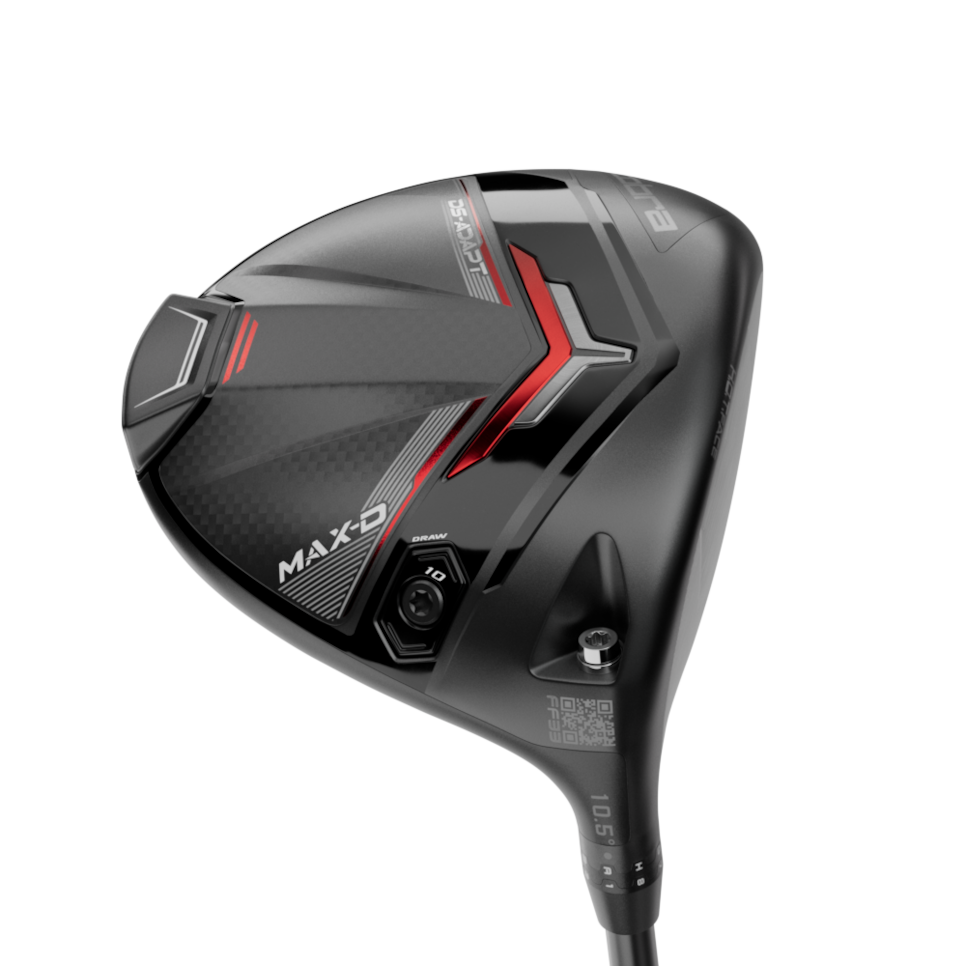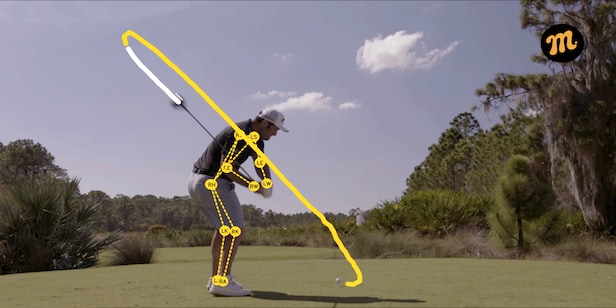Cobra DS-Adapt drivers: What you need to know – Australian Golf Digest

- by Admin
- December 12, 2024

WHAT YOU NEED TO KNOW: The Cobra DS-Adapt family of drivers will include four models ranging from the compact, low-spin, tour-preferred LS to the ultra-high forgiveness-focused Max-K. But what truly makes the lineup most intriguing is a reimagined adjustable hosel with 33 settings. Unlike traditional adjustable hosels, Cobra’s so-called “Future Fit 33” aims to give players and fitters the option to stretch ball flight tweaks equally to the fade side as the draw side, and equally lower as higher across four-degree loft and lie windows.
PRICE: $550. DS-Adapt LS (9, 10.5 degrees); DS-Adapt X (9, 10.5 degrees); DS-Adapt Max-K (9, 10.5, 12 degrees); DS-Adapt Max-D (10.5, 12 degrees). Each head features 33-way adjustable hosel, +/- 2 degrees of loft, +/- 2 degrees of lie angle. Available for fitting Dec. 12, in stores Jan. 10.
justin kosman
3 COOL THINGS 1. Fit for a king. The idea of a driver with extensive adjustability is not necessarily new. Back in the day when Nike was still a golf equipment brand, the company introduced a driver with an adjustable hosel that had 32 settings. At the height of its most adjustable drivers a decade ago, TaylorMade was introducing drivers with more than 1,800 settings. So when Cobra announced its intention to retool its adjustable hosel to accommodate 33 settings, there was a sense of flashback. But here’s the thing: We are in a fundamentally different place today than a decade ago when it comes to the concept of not merely making adjustments to a driver, but analyzing the effects of those changes. The launch monitor is more widespread and more efficient in isolating the variable a player needs tweaked to optimize his or her launch conditions.

But the DS-Adapt family’s hosel adjustability isn’t just rehash. While it is rare to find any driver that isn’t adjustable these days, they all seem to share a flaw, according to Cobra’s design team. Those adjustments tend to focus on what amounts to a smaller range of the mis-hit improvement, tending to adjust shots in only a draw-biased or fade-biased direction with every adjustment, for example. Cobra’s approach with FutureFit33 is fundamentally broader, said Jose Miraflor, vice president of product architecture.
“People think that if you add loft or reduce loft on an adjustable driver, you’re still on target straight down the line, just higher or lower. Unfortunately, there’s only one setting that sets you down the range straight,” Miraflor said. “Everything else is working the ball or tilting the spin axis more left. With our design, we can not only go upward, downward, right or left, we can do those all independently.”

Not to be overlooked is that the new adjustable hosel weighs a half-gram less than the old one with more than four times as many settings. Also, the DS-Adapt drivers, like past Cobra models, benefit from a flat section on the sole of the driver (called the Smart Pad) that keeps the face angle from changing with every adjustment. “No matter what the loft or life settings you put into this driver, it sits square,” Miraflor said.
2. Air quality. Cobra drivers in recent years have done extensive work to improve how efficiently the head moves through the air. But aerodynamics are a relative proposition: The faster you swing, the more it matters. So with this year’s lineup of drivers, the models designed for faster swingers pay more attention to sleek aerodynamic shaping. That means the DS-Adapt LS and DS-Adapt X feature the raised rear section, higher crown peak and smoother curves that make for a “faster” clubhead. Meanwhile, the average golfer speeds that gravitate to the more forgiving drivers like DS-Adapt Max-D and Max-K focus less on aerodynamic shaping and more on key forgiveness elements, like a lowered rear section for higher launch and more overall stability.

To keep the centers of gravity lower than in the past and counteract some of the effects of that raised rear section, both the LS and models now use a lower drop in the heel section of the crown and skirt. And while the Max-D and Max-K focus on stability with an aerodynamically “slower” shape, both have softened curves and smoother soles to reduce drag as much as possible.
3. Four-by-four. While the line benefits throughout from an AI-fueled face thickness design that features 15 distinct thickness regions, the four models home in on distinct player types. Still, even within those designs there are overlapping adaptations. The DS-Adapt LS and DS-Adapt X represent the two lowest spin options in the lineup with the LS focusing on tweaking ballflight through adjustable weighting and the X straddling the line between lower spin and forgiveness. The LS is slightly smaller than last year’s version for improved aerodynamics but also to help push the CG farther forward for the lowest spin. It also incorporates three adjustable sole weights (one 10-gram and two 3-gram weights) to dial in spin and trajectory, including heel and toe positions up front and a centered back position. The movable weight comes courtesy the weight-saving effects from a carbon composite crown and sole plate. The larger profiles DS-Adapt X uses front and back sole weights to tweak launch, spin and forgiveness, but mixes front and back internal weighting for increased stability.

One tweak in both the LS and X lies in how the internal weighting changes based on loft. Both 9-degree versions utilize Cobra’s unique bridge-like weight bar towards the very front of the sole that provides for the lowest CG but also allows the face to flex better. Meanwhile, on the 10.5-degree models that bar is removed, providing more weight for the back end of the head to increase forgiveness and launch for that player who is looking for more help on mis-hits.
The Max-D and Max-K models present the largest footprints, with the former focusing on fighting the slice and the latter pushing the extremes of forgiveness as measured by moment of inertia. The Max-K is designed to be Cobra’s first driver to reach a combined measurement of MOI of more than 10,000. That’s a reference to its measured stability on mis-hits heel to toe combined with its stability on mis-hits high and low, an area only a few drivers on the market have pursued, most notably Ping [https://www.golfdigest.com/story/ping-g430-max-10k-driver–what-you-need-to-know] and TaylorMade [https://www.golfdigest.com/story/taylormade-qi10-drivers–what-you-need-to-know] and most recently Tour Edge [https://www.golfdigest.com/story/tour-edge-exotics-725-drivers–what-you-need-to-know]. Because of its deep CG, the Max-K features slightly stronger lofts because of its built-in higher launch. The Max-D uses heel-side weighting and an upright lie angle for Cobra’s most draw-biased driver ever. Its lighter head weight makes it even easier to square up to the target for moderate swing speed players.
This article was originally published on golfdigest.com
The Latest News
-
December 22, 2024Zheng to skip United Cup, focus on Aussie Open
-
December 22, 20242024 runner-up Qinwen Zheng pulls out of Australian Open lead-in event
-
December 22, 2024Cricket Australia ‘disgraced’ by fans after ’embarrassing’ BBL visual; Sam Konstas flops before potential debut vs India
-
December 22, 2024‘I want to be out there’: Webster’s long wait for Test debut could be over with Marsh’s all-round capability clouded
-
December 22, 2024China’s Zheng to skip United Cup, needs ‘extra rest’ ahead of Australian Open





